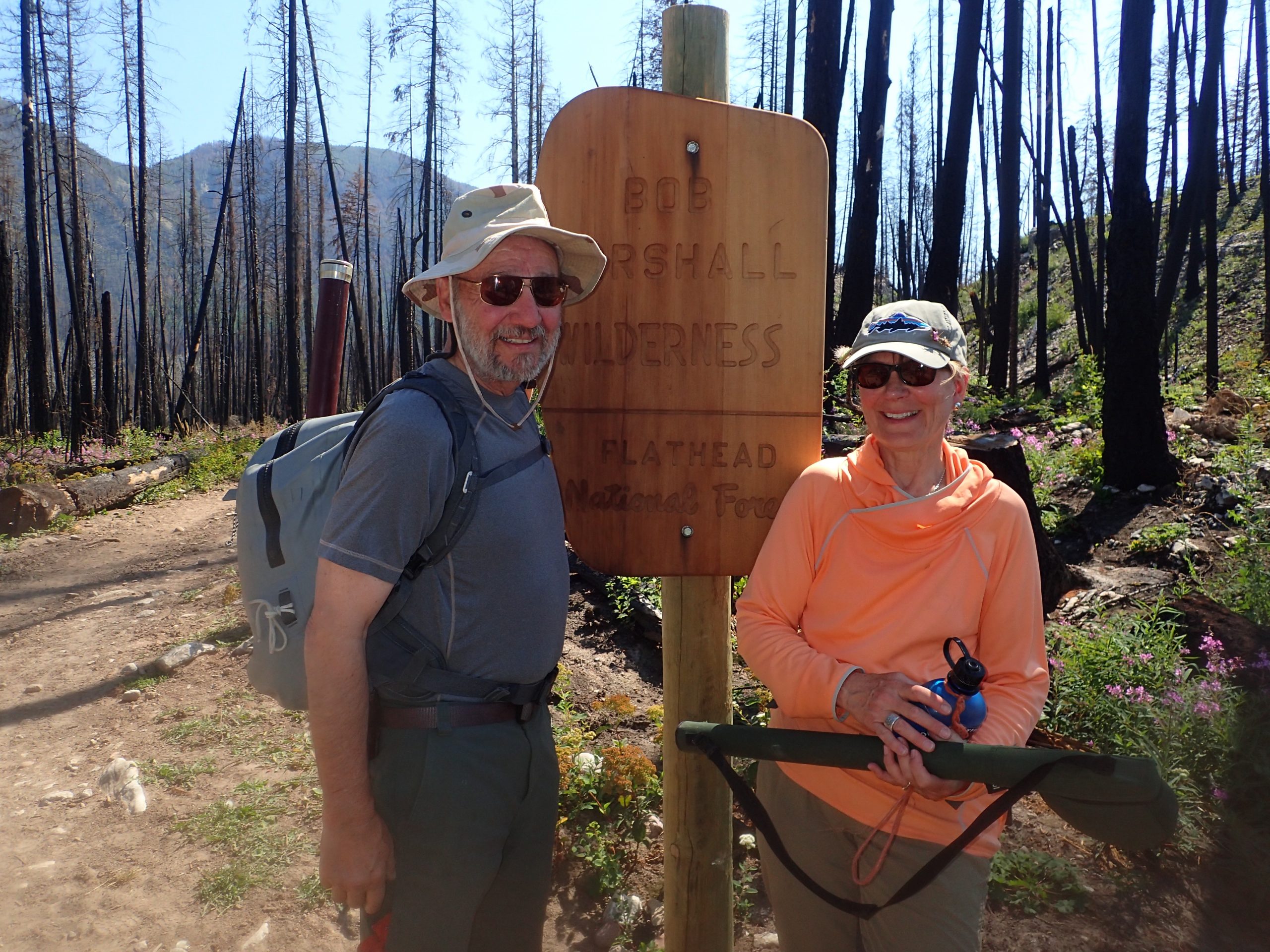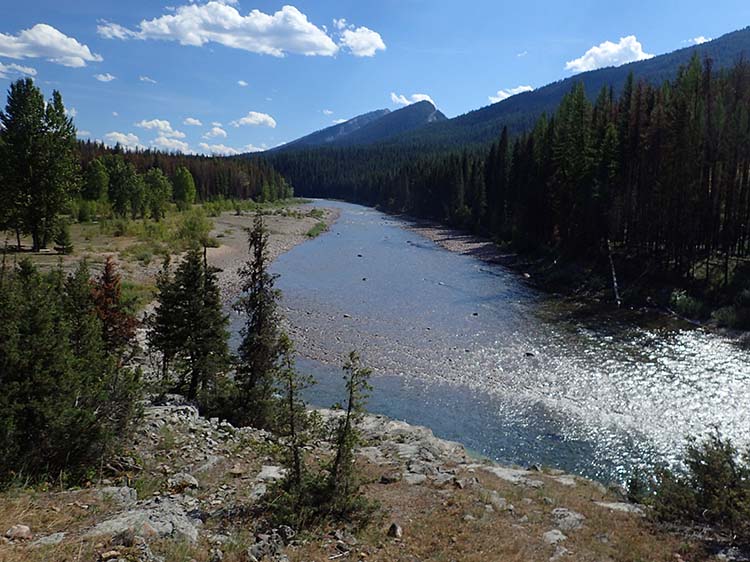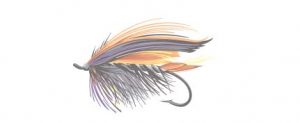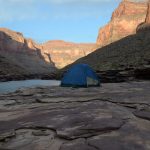This summer provided lots of opportunities to hang out in the wilderness in the amazing west. The American wilderness means many things to many people but it has been defined in the Wilderness Act of 1964, in this way – “in contrast with those areas where man and his own works dominate the landscape … as an area where the earth and its community of life are untrammeled by man, where man himself is a visitor who does not remain.”
This idea of being a visitor is important. In the Grand Canyon, for example, we never saw one trace of humanity – except of course the change in the river due to the Glen Canyon Dam. Every visitor who makes a trip down the Colorado knows not to leave a scrap of paper or even crumbs on the beaches of the Canyon. Everything that comes in, goes out – and that means everything!
This summer provided lots of opportunities to hang out in the wilderness in the amazing west. The American wilderness means many things to many people but it has been defined in the Wilderness Act of 1964, in this way – “in contrast with those areas where man and his own works dominate the landscape … as an area where the earth and its community of life are untrammeled by man, where man himself is a visitor who does not remain.”
This idea of being a visitor is important. In the Grand Canyon, for example, we never saw one trace of humanity – except of course the change in the river due to the Glen Canyon Dam. Every visitor who makes a trip down the Colorado knows not to leave a scrap of paper or even crumbs on the beaches of the Canyon. Everything that comes in, goes out – and that means everything!
We booked a second wilderness adventure over a year ago with Joe Sowerby’s Montana Flyfishing Connection. This trip took us to the South Fork of the Flathead River in Northwestern Montana, 30 miles in to the Bob Marshall Wilderness area by horseback and mule train for our supplies. This area has the distinction of being the first designated wilderness area in the country. The mules brought in tents, boats, the kitchen, food and any other supply needed for a week in the wild. It was actually a little embarrassing to see 13 mules in tandem for our “wilderness” trip.
We had planned on getting some practice horseback riding throughout the summer, but were never able to fit it in – and we wish we had! We rode for eight hours on the first day and understood why cowboys often walk bow-legged. The next day we put in another eight hours! We camped for three nights at this site and took a day off riding and instead wade-fished for the day. I found a great hole that housed a large West Slope Cutthroat that I worked to catch all day, but he was way too smart for me. I caught lots of other beautiful 14-16 inchers, but I was on the hunt for the big daddy.
We rode another seven miles the next day to get to Meadows Creek where there was an abundance of cutthroat and also humongous bull trout – although it was past season for fishing for them. They liked to chase our smaller cutties and fortunately, they didn’t latch on to any.
On the 4th day, we climbed into our rafts and had 3 1/2 days to float down this pristine river. It’s known to be one of the most untouched rivers in the country and this certainly appeared to be the case. The water is gin-clear and you have to work not to catch a fish. There are occasional rapids that might seems challenging to some, but after our trip down the Colorado, everything is relative to those we had encountered there.
Throughout our horseback ride up and float down, we observed a forest that had been decimated by forest fires – one as recently as Spring 2016 known as the Elk Creek Fire that had burned over 1000 acres. Other fires over the last 25 years occurred in 2011, 2003, 1998 and 1981. The fireweed was abundant, signs that the forest is recovering and becoming alive again. It was a different kind of beauty – stark, haunting and hopeful.
It’s so easy to be present when on the water – the sounds, sights and smells. You leave behind all that doesn’t present itself in the moment. New friendships are made based on shared experiences and you walk out a different person. It is with great thanks to the guides and wranglers on this trip, for without them, I would have had to be a better hiker, a better boats person and a lot more knowledgeable about “the Bob.” Cheers to all, especially old friends Canadians Myles and Duane and new friend Wyoming Anne.
We rode another seven miles the next day to get to Meadows Creek where there was an abundance of cutthroat and also humongous bull trout – although it was past season for fishing for them. They liked to chase our smaller cutties and fortunately, they didn’t latch on to any.
On the 4th day, we climbed into our rafts and had 3 1/2 days to float down this pristine river. It’s known to be one of the most untouched rivers in the country and this certainly appeared to be the case. The water is gin-clear and you have to work not to catch a fish. There are occasional rapids that might seems challenging to some, but after our trip down the Colorado, everything is relative to those we had encountered there.
Throughout our horseback ride up and float down, we observed a forest that had been decimated by forest fires – one as recently as Spring 2016 known as the Elk Creek Fire that had burned over 1000 acres. Other fires over the last 25 years occurred in 2011, 2003, 1998 and 1981. The fireweed was abundant, signs that the forest is recovering and becoming alive again. It was a different kind of beauty – stark, haunting and hopeful.
It’s so easy to be present when on the water – the sounds, sights and smells. You leave behind all that doesn’t present itself in the moment. New friendships are made based on shared experiences and you walk out a different person. It is with great thanks to the guides and wranglers on this trip, for without them, I would have had to be a better hiker, a better boats person and a lot more knowledgeable about “the Bob.” Cheers to all, especially old friends Canadians Myles and Duane and new friend Wyoming Anne.










